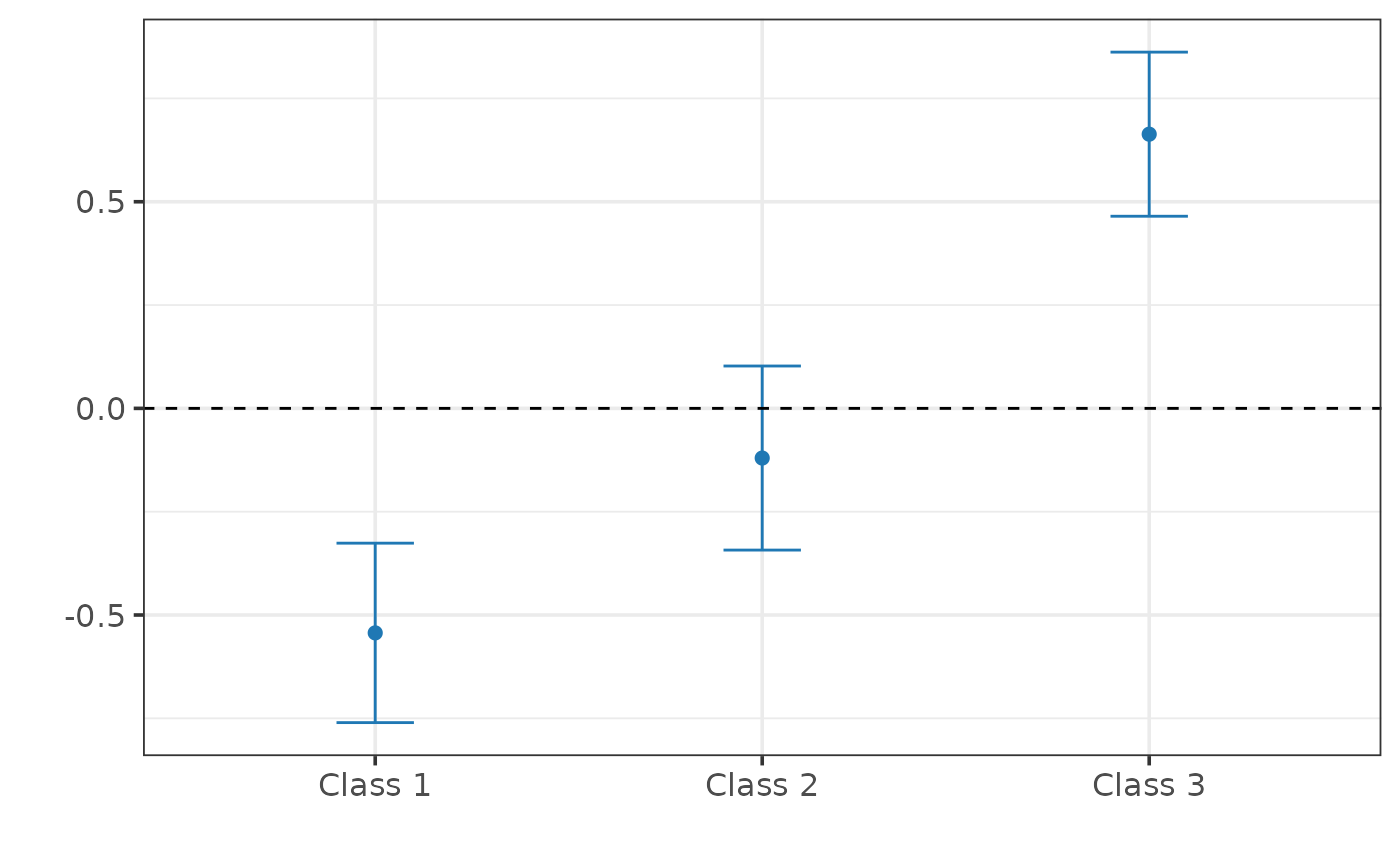Causal Inference for Qualitative Outcomes under Difference-in-Differences
causalQual_did.RdCausal Inference for Qualitative Outcomes under Difference-in-Differences
causalQual_did(Y, D, unit_id, time)Arguments
- Y
Qualitative outcome before treatment. Must be labeled as \(\{1, 2, \dots\}\).
- D
Binary treatment indicator.
- unit_id
Unit identifier.
- time
Time identifier.
- treatment_start
Denots at which
timetreatment starts. Must be zero for never-treated.- ...
Other arguments for the
att_gtfunction.
Value
An object of class causalQual.
Details
Under a difference-in-difference design, identification requires that the probabilities time shift for \(Y_{is} (0)\) for class \(m\) evolve similarly for the treated and control groups (parallel trends on the probability mass functions of \(Y_{is}(0)\)). If this assumption holds, we can recover the probability of shift on the treated for class \(m\):
$$\delta_{m, T} := P(Y_{it} (1) = m | D_i = 1) - P(Y_{it}(0) = m | D_i = 1).$$
causalQual_did applies, for each class \(m\), the canonical two-group/two-period method to the binary variable \(1(Y_{is} = m)\). Specifically,
consider the following linear model:
$$1(Y_{is} = m) = D_i \beta_{m1} + 1(s = t) \beta_{m2} + D_i 1(s = t) \beta_{m3} + \epsilon_{mis}.$$
The OLS estimate \(\hat{\beta}_{m3}\) of \(\beta_{m3}\) is our estimate of the probability shift on the treated for class m. Standard errors are clustered at the unit level and used to construct
conventional confidence intervals.
References
Di Francesco, R., and Mellace, G. (2025). Causal Inference for Qualitative Outcomes. arXiv preprint arXiv:2502.11691. doi:10.48550/arXiv.2502.11691 .
See also
Examples
## Generate synthetic data.
set.seed(1986)
data <- generate_qualitative_data_did(100, assignment = "observational",
outcome_type = "ordered")
Y <- data$Y
D <- data$D
unit_id <- data$unit_id
time <- data$time
## Estimate probabilities of shift on the treated.
fit <- causalQual_did(Y, D, unit_id, time)
summary(fit)
#>
#> ── CAUSAL INFERENCE FOR QUALITATIVE OUTCOMES ───────────────────────────────────
#>
#> ── Research design ──
#>
#> Identification: Difference-in-Differences
#> Estimand: Probability Shifts on the Treated
#> Outcome type:
#> Classes: 1 2 3
#> N. units: 100
#> Fraction treated units: 0.48
#>
#>
#> ── Point estimates and 95\% confidence intervals ──
#>
#> Class 1: -0.543 [-0.760, -0.326]
#> Class 2: -0.120 [-0.343, 0.103]
#> Class 3: 0.663 [ 0.465, 0.862]
plot(fit)
